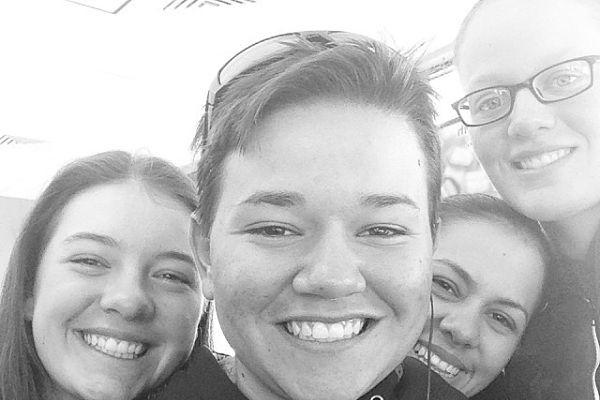Three women on Thursday will graduate from the Marine Corps' Infantry Training Battalion course -- the first women to do so in the Marine Corps' 238-year history.
These three female Marines represent a major step toward the U.S. military formally introducing women into combat roles. Former Defense Secretary Leon Panetta announced the order to open these roles to women in January.
Since then, the services have studied how to integrate women into combat, and the Marine Corps has led the pack. The studies and progress have varied across the military as each service figures out the best way to integrate women onto the front lines.
Of course, many female troops have seen combat in America's history, most recently in the past decade of war in Iraq and Afghanistan. However, plenty of obstacles still exist in formally opening up these combat roles that have traditionally been male-only.
For example, leaders must decide if the standards will remain the same for women. Cultural obstacles may prove to serve as the largest roadblock as many male soldiers try and come to grips with women entering male-exclusive segments of the military.
The Marine Corps began allowing females to go through the Infantry Training Battalion course in late September as part of a research effort that will guide the service's decision on whether to allow women into a number of combat arms jobs.
On Thursday, the first three will graduate. The fourth, Pfc. Harlee "Rambo" Bradford, told Marine Corps Times she suffered a leg injury and will be unable to graduate with the other three at Camp Geiger, N.C.
The Marine Corps has kept the identities of the women at ITB a secret. However, Bradford took the picture seen above and posted it to her Instagram account. Business Insider posted it to their website Tuesday, and it has since spread across social media and served as an inspiration to other female troops.
Graduating from ITB doesn't mean these female Marines are in the infantry, Marine Corps spokeswoman Capt. Maureen Krebs pointed out.
"They don't actually get the MOS of infantry," she said.
Instead, the females are given a tracking number, which will appear in their personnel records and will also be part of the ongoing research effort.
"This is still part of our research that we are doing to decide whether or not we are going to have an exception to policy," Krebs said.
The Marine Corps will continue to allow female Marines to go through ITB and the Infantry Officers Course until the research phase ends next fall. From there, the data will be compiled into a recommendation to Defense Secretary Chuck Hagel on how the Corps intends to open up certain combat-arms jobs to women by Jan. 1, 2016.
To qualify, the females had to pass the same physical screening as male Marines. At a minimum, they had to be able to do three pull-ups, 50 crunches in two minutes and run 3 miles in 28 minutes on the Physical Fitness Test.
There is also a combat fitness test. The three-part CFT involves timed events such as an 800-meter "movement to contact" run in boots and utility uniform, lifting a 35-pound ammo can overhead 33 times, and a maneuver-under-fire course.
The two-month-long ITB course trains Marines in basic infantry skills and builds endurance with physical challenges such as a graded, 20-kilometer -- or 12.4-mile --hike carrying 85 pounds of equipment that must be completed in less than five hours.
So far 39 females have entered the ITB course and the ones that remain are spread out across three training companies.
The three graduating today were part of a group of 15 females that originally began the ITB course Sept. 24.
Despite the milestone, females who have volunteered for the Infantry Officers Course have not experienced the same success.
Nine of the 10 females who volunteered out of The Basic School failed to make it through the first day of IOC. The remaining female volunteer dropped because of an injury from the course a week later.
IOC is a demanding 13-week school that historically averages a 25-percent attrition rate for male Marines. The first day puts students through a grueling Combat Endurance Test that consists of physically and academically challenging tasks that last all day.
Marines wear combat gear, perform various physical tasks and answer tactical questions while negotiating a land-navigation course, Krebs said.
Unlike the ITB course, female Marine officers attempting to enter IOC are not expected to meet the same physical fitness screening standards as male Marines. But they do have to match male performance in the course.
All IOC candidates are pre-screened before they even show up for the course. Like their male counterparts, females need to have a top-level score on the PFT -- but under the Marine Corps female standard, not the male one, which does not require pull-ups.
The Corps has been evaluating the physically-demanding tasks required for combat-arms related jobs in about 335 Military Occupation Specialties.
The service conducted "proxy tests" this summer, involving 400 females and 400 males at Quantico Marine Base, Va., and at Camp Lejeune, N.C. The tests looked at tasks such as "lifting a tank round and loading it," Krebs said.
The data from the performance on those proxy tests will be "correlated" against the performance of the Marines doing physical fitness and combat fitness test events, Marine officials said.



























